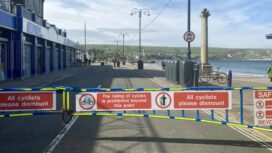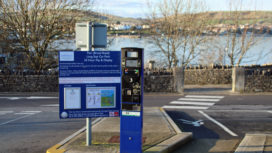The Sandbanks Ferry company wants to increase its prices but because of objections by local councils and the National Trust, the matter is now to be decided by a government appointed planning inspector.
The inspector has started to hear the views of the ferry company and the objectors on the matter, to give everyone a chance to state their case and for her to reach a considered decision.
This is not the first time the matter has gone to a public inquiry – in 2018 the inspector at the time, rejected an application for the tolls to increase.
The inquiry is being conducted on Zoom
However, it is the first time that the inquiry has been conducted by Zoom with the inquiry starting at 9.30 am on Tuesday 5th January 2021. It is expected to last several days.
At the start of the session, the inspector informed everyone that to extend her knowledge of the area and the ferry operation, she had travelled on the ferry on Monday 7th December 2020 and visited The Pig on the Beach Hotel and the Studland Stores – both important businesses on the peninsula.
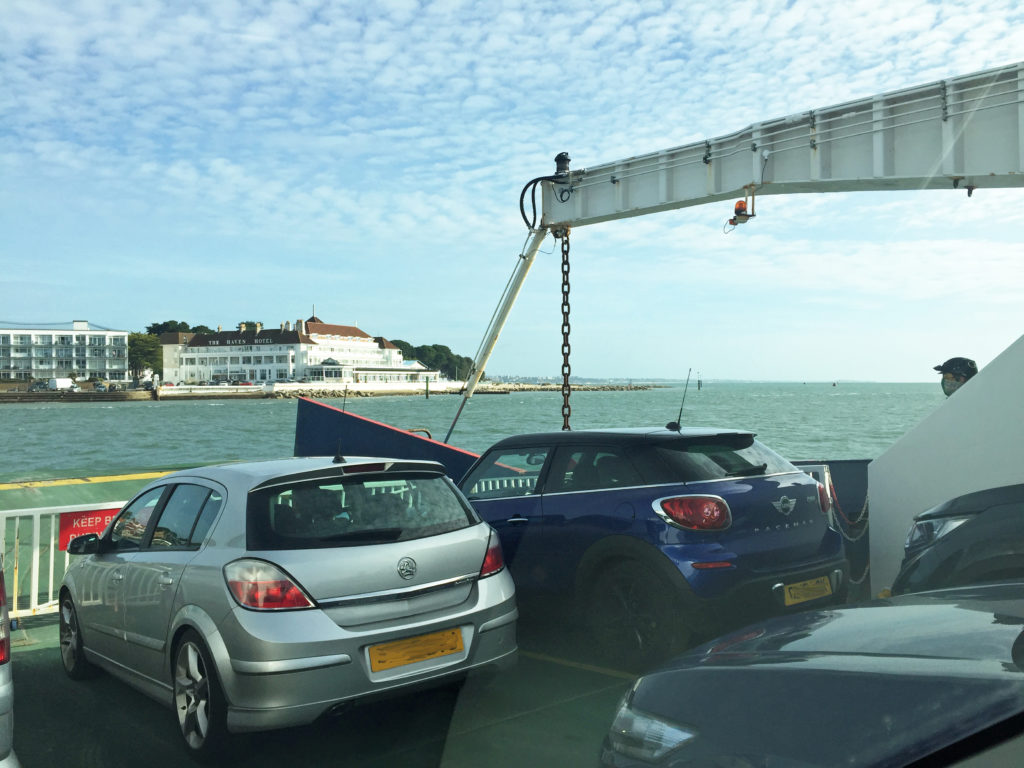
Opening statements
The inquiry started with opening statements from the ferry company, and the three main objectors.
Sandbanks Ferry Company
The ferry company’s position was outlined by its legal representative, Paul Reynolds. He said that the main aim of increasing tolls was to cover the day to day costs including maintenance, to provide a reasonable contribution to the company’s reserve fund and to provide a reasonable return for the company. He added that the ferry would need to be replaced in 2029-34 and that contributing to the ferry replacement fund would be given priority over dividends for directors.
The company submitted proposals at the beginning of 2020 but now wished its recently revised submission to be considered. This includes keeping pedestrian and bicycle fares fixed at current levels and the cost of books of tickets for frequent car users to be at a lower cost than the original proposal.
He said the shortfall would be made up by charging slightly more for individual car journeys – from £4.50 in 2021, rising to £6.75 in 2032.
Consortium of Dorset Council, Bournemouth, Christchurch and Poole (BCP) Council, and Swanage Town Council
Stating their case next was the consortium of councils comprising Dorset Council, Bournemouth, Christchurch and Poole (BCP) Council, Swanage Town Council. Their legal representative was Joshua Dubin who said the main principle was that any fare increase should favour sustainability and local benefit and he welcomed the ferry company’s revised proposal.
He did however question the way that the ferry replacement fund was set up and said that there was currently no way to make the ring fencing of the fund legally enforceable, meaning that the company could decide to use it for something else.

Studland Parish Council
Next up was the chair of Studland Parish Council, Nick Boulter. He said that in the opinion of the parish council, little had changed since the last inquiry when the toll increase had been rejected. He said:
“The date set for a replacement ferry could easily change as it has in the past. There is no sound mechanism for securing the ferry replacement reserve or stopping the money being transferred to other parts of the ferry group as has happened for many years.
“Thirdly, the rate of return forecasts are excessive and go beyond what is needed for the operation of the ferry or its replacement.”
Criticising the council consortium’s proposal he said:
“Inexplicably the proposal provides more revenue for the ferry company than the ferry company has requested!”
National Trust
Final opening statement was from National Trust general manager for Purbeck, Tracey Churcher who outlined the National Trust’s main objections to the toll increase. She said:
“Fare increases will impact our ability to recruit and retain staff and volunteers, which is already difficult because of the cost of the ferry. Secondly the fare increase will have a negative effect on the accessibility of the National Trust’s Studland and Purbeck sites, especially for those on lower incomes.”
She added that if the fare was too high then less people would choose the ferry and argued it was better to lower the price and encourage more motorists to use it, thus increasing revenue that way.
Environmentally, it was better to dissuade drivers from going via the longer and often congested Sandford and Corfe Castle road route. It was also suggested that a lower ‘off peak’ fare could be trialled.

Expert witnesses called by the Sandbanks Ferry
Following the opening statements the legal representative for the ferry company, Paul Reynolds called three expert witnesses covering the technical aspects of ferries, the estate value of the Sandbanks Ferry Company and the ferry company’s finances. They were each cross examined by objectors.
Principal consultant naval architect
The first to give evidence was Timothy Hope, principal consultant naval architect at Burness Corlett Three Quays in Southampton. He spoke about the need to replace the current ferry and the type of vessel that could be purchased in 12 years time to replace it. He was questioned over the estimated cost and environmental specifications.
Studland resident, Andrew Parsons challenged him on whether a new ferry was really necessary in 2029-34, implying that it was just the excuse of the ferry company to justify toll increases. Timothy Hope replied that after that date the cost of maintenance of the ferry would rise considerably and risked not meeting safety standards.
Chartered surveyor and partner at Gerald Eve LLP Chartered Surveyors
He was followed by Richard Glenwright, chartered surveyor and partner at Gerald Eve LLP Chartered Surveyors. He gave a breakdown of the valuation of the ferry company’s assets and said that based on a valuation from 2015 they were valued at £14,270,000.
The importance of this figure is that this is the basis for the ferry company judging whether its investment is receiving a ‘reasonable return’. The higher it is the more return the company should expect to receive.
It was revealed that this was a valuation suitable for accounting purposes but was not a figure that could be used for the ferry company to apply for a bank loan. The robustness of this figure was intricately analysed in the cross questioning from objectors.
As a side issue, the valuation included three kilometres of Ferry Road and the roundabout as an asset. It was said to have a value of £3,420,000 partly based on the information that the ferry company had rights over the road similar or akin to freeholder rights.
This was challenged by Andrew Parsons who said that he believed the original Bournemouth-Swanage Motor Road and Ferry Act 1923 only gave the ferry company access or easement rights. The planning inspector said this was a legal dispute and not a subject that could be determined by the inquiry.
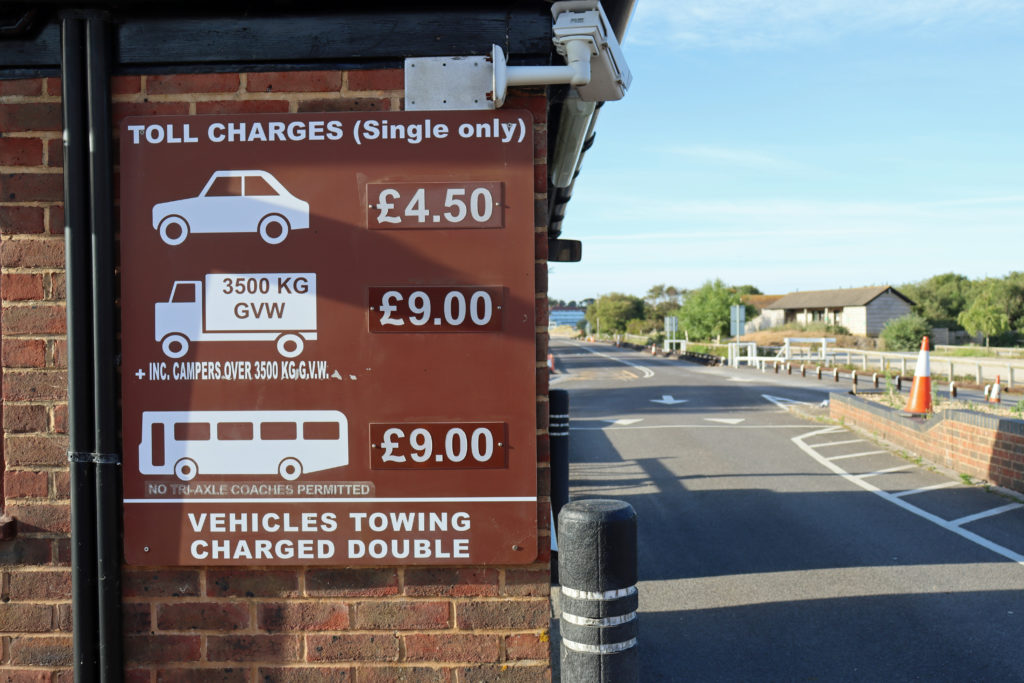
Accountant and tax adviser
Kevin Thomas, accountant and tax adviser at Rickard Luckin was the next to be grilled over the ferry’s finances. He gave details behind the reasoning of why a toll increase was necessary. He said that to ensure that the current ferry could be replaced in 2029-34, the money set aside for the purchase in the ferry replacement reserve would have to be boosted, especially as income for this financial year had been hit by Covid travel restrictions.
Kevin Thomas took on board some of the consortium’s proposals and said that there were a number of beneficial suggestions including promoting environmentally friendly travel by foot and bike.
He was dismissive of the National Trust’s suggestion that car trips should be £2 for regular local drivers and that lower prices would increase usage. He said there would be admin costs and there was no clear detail on how it could be operated. He even suggested that trying to charge a lower fee for off peak trips could cause arguments between staff and motorists over timings and payments.
The afternoon session was largely taken up by the forensic questioning of Kevin Thomas by objectors including local Studland residents Malcolm Tice and Eric Stobart, who took issue with a number of aspects of the financial report.
Central to the main concerns was the lack of way to legally ensure that the money from the increased tolls would go into the ferry replacement fund and that it would be definitely be used to buy a new ferry when the time came to replace the current vessel. It was suggested that it would be better to set up a trust fund for the cash, which would then have greater legal protection.
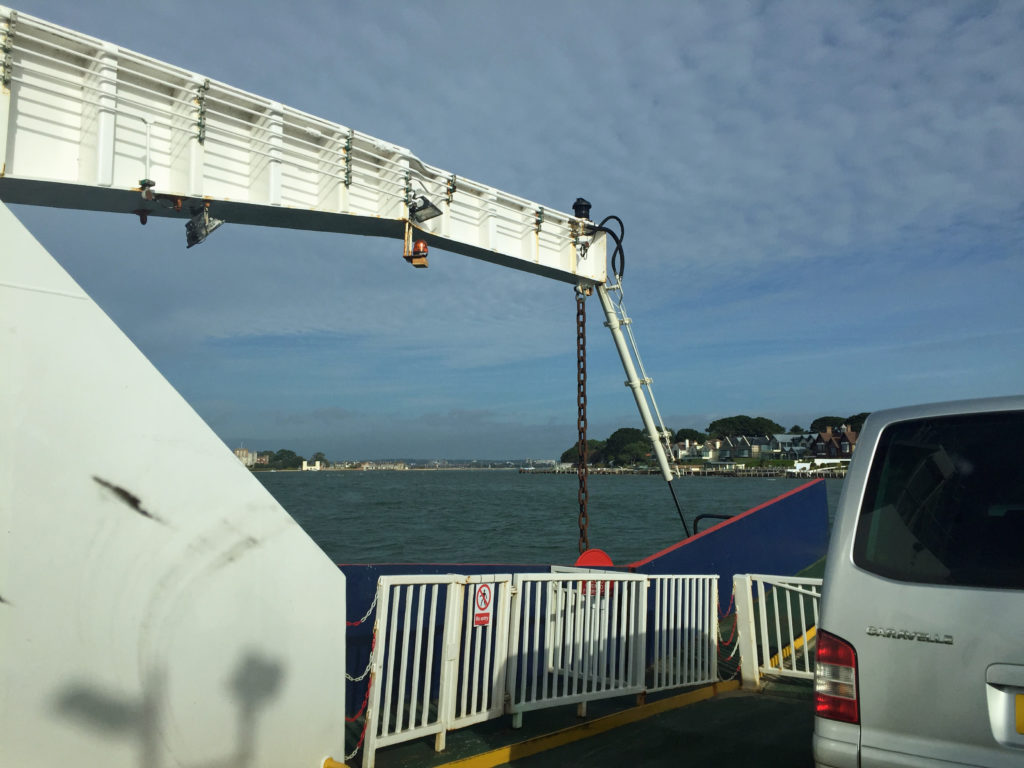
The inquiry was then adjourned
The second day of the inquiry on Wednesday 6th January 2021 will hear from the managing director of the Sandbanks Ferry Company, Mike Kean and the manager of the Pig on the Beach hotel in Studland.
The inquiry is scheduled to take several days and the decision of the inspector won’t be known until she has had time to consider all the evidence.
Further information
- Sandbanks Ferry opening statement
- Consortium of councils opening statement
- Studland Parish Council opening statement
- National Trust opening statement
- Tim Hope, principal consultant naval architect at Burness Corlett Three
Quays – read his report - Richard Glenwright, chartered surveyor and partner at Gerald Eve LLP Chartered Surveyors – read his report
- Kevin Thomas, accountant and tax adviser at Rickard Luckin – read his report
- The full list of the objections to the proposal to increase the tolls
- Read the Bournemouth-Swanage Motor Road and Ferry Act 1923


